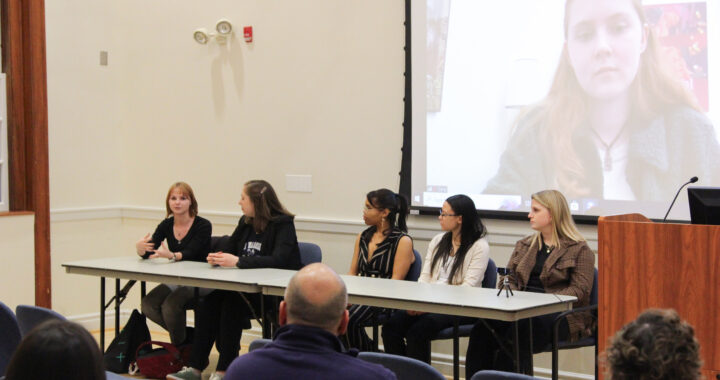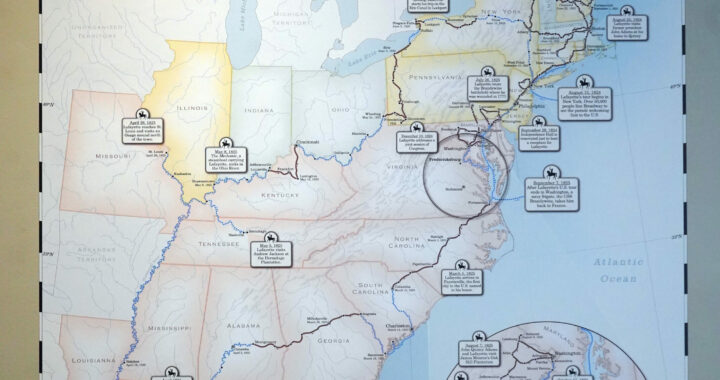Students Tweet for Class Credit
4 min readHEATHER BRADY
Students in Professor Claudia Emerson’s Literary Journal course are using Facebook, Twitter, and Flickr during class time—with her full approval.
Emerson, the Arrington distinguished chair in poetry, has taught them to utilize social networking forums to get submissions for the online literary journals that they have created this semester. Students have been working with technology and the internet to organize their submissions and to present their journals in a student-designed format on the UMW Blogs website as well.
Emerson came up with the original idea for the class because she felt that creative writing students didn’t know enough about professional literary journals.
“The creative writing students typically didn’t know much about…how vital [literary journals] are in the publishing lives of poets, short fiction writers, and essayists,” Emerson said.
Emerson wanted to involve students in creating journals of their own as part of the coursework so students “could see from the inside what goes into conceiving of a venue for writers and other artists—and then experience [it].”
Emerson worked closely with Jim Groom, the instructional technology specialist, to set up an online space for students to use in creating their journals.
“The first iteration of this class was actually done through ELS Web, which was a Bluehost account paid for by what was then the [Department of English, Linguistics and Speech],” Groom said. “We set up an individual WordPress blog for each journal group, and they conceptualized and designed it in their own space. We moved to UMW Blogs the next year, because it was a lot simpler to have all the sites hosted on one larger blogging platform, and we could easily share functionality and themes.”
“When I talked with Jim Groom about the class, he suggested we think about having the students actually create an inaugural issue of a journal, and I thought this was perfect,” Emerson said.
Emerson decided to focus on using the internet as a means of creating the journals because of its inherent economic viability.
“The technology of online as opposed to print is more economical, in terms of money and time,” Emerson said. “The semester is only 15 weeks long, so online simply made more sense in the beginning.”
The class has happened for three semesters, and is now a requirement for English majors concentrating in creative writing. This semester, students were organized into three groups to create a conceit, or basic theme, for their journal in the beginning, and then to see it through into creation.
One of the groups’ journals, Ripple, focused on the idea behind Newton’s Third Law that with every action, there is an equal and opposite reaction.
“We were not just looking at the end result, but what it took to get to the art,” Senior Elizabeth Bodi said. “The name ‘Ripple’ comes from what we were looking at—not just the surface waves, but the driving force behind them. So when we looked at submissions, we wanted work that wasn’t just good. We wanted excellent quality that really reflected the hard work of the artist.”
Students were innovative in advertising for submissions, using Facebook groups, Twitter accounts, and in the case of Ripple, emailing the heads of creative writing departments at other universities to ask for submissions from faculty and students.
The creators of Pendulum, another of the journals, also developed a way to get submissions from the website Flickr. Due to the innovative nature of the method, Groom had one of the members write up a tutorial on the method for the UMW Blogs site.
“I’ve been a member of this photo sharing website for quite some time, and I saw opportunity in it and told my group,” senior Lauren Orsini said. “Then I began soliciting Flickr members for their submissions by creating a submission pool using the “groups” option. Through Flickr alone, we received 200 images, 50 of them in the first three days of our submission period. When it became clear that we would have a lot (about 60 entries from 41 submitters), I started modifying the website.”
Once people submitted works to the groups, students used Gmail to sort through the submissions.
“We organized submissions through Gmail, which was really helpful,” senior Johannah O’Keefe said. “Submissions were sent directly to our journal’s Gmail account. We set up a Google spreadsheet, and used it to accept or reject submissions.”
Groom said that in terms of the journals’ longevity, the ones that students have created can last beyond their years at UMW. He says that the websites will be up as long as UMW Blogs is up and the students want the journals to be up.
Groom also said that this year, students bought their own domain names for $10 to $14 annually, so they can easily keep the same address while taking all of their work with them after graduation, which he said is the focus of UMW’s Division of Teaching and Learning.
Emerson said that while there are still many literary journals in print, online magazines and journals are gaining in popularity and prestige.
“While our student-run journals have not been able to attract very many established writers and artists, they have attracted excellent emerging artists and writers, and I believe their results have been very successful,” Emerson said.











